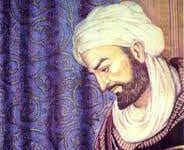Bhasa was one of the most influential and pioneering playwrights in ancient India, known for his innovative contributions to Sanskrit drama. Though little is known about his personal life, his plays, including ‘Svapnavasavadattam’, have left a lasting legacy in Indian literature.
Bhasa | Brief Biography
Bhasa is one of the most famous and influential ancient Sanskrit playwrights, widely regarded as a pioneer of Sanskrit drama. However, not much is known about his personal life, including his birth and death dates, and even his real name is a matter of speculation.
Bhasa is said to have lived in India, probably in the eastern region, during the 2nd or 3rd century BCE. He is known for having written at least thirteen plays, including “Urubhanga,” “Duta-Vakya,” “Madhyamavyayoga,” and “Abhijnana-Shakuntala,” among others. These plays are characterized by their intricate plot structures, complex characterizations, and vivid depictions of human emotions.
“Abhijnana-Shakuntala” is considered one of his most famous works, and is still performed and widely read today. The play tells the story of Shakuntala, a young woman who falls in love with King Dushyanta but is eventually separated from him. The play explores themes of love, loss, and reunion, and is known for its beautiful poetry and lyrical language.
Despite his great literary achievements, he remained relatively unknown until the 19th century, when his works were rediscovered and widely popularized. Today, he is widely regarded as one of the greatest playwrights in Sanskrit literature, and his plays continue to be performed and studied around the world.
In conclusion, although there is limited information available about Bhasa’s personal life, his legacy as a playwright remains secure and continues to be celebrated. 0 0 0.
Bhasa: Comprehensive Biography
Introduction
Bhasa is one of the most famous and influential playwrights of ancient India. He is considered a pioneer in the development of Sanskrit drama. However, very little is known about his personal life, including his birth and death dates. There is also uncertainty about his real name, as Bhasa may have been a pen name or a title.
‘Works and Contributions’
His significance in the history of Sanskrit drama comes from the discovery of thirteen of his plays. Before these plays were found, Bhasa was only known through references in the works of later poets like Kalidasa, who praised him as a great dramatist. In 1912, a scholar named T. Ganapati Sastri discovered and published several plays attributed to Bhasa, changing the understanding of early Indian theatre.
His plays are known for their simple language, engaging plots, and innovative storytelling. Unlike other classical Sanskrit playwrights, Bhasa was willing to deviate from the strict rules of drama, which were laid down by Bharata in his treatise ‘Natyashastra’. For example, in some of his plays, he depicted the death of characters on stage, something that was traditionally avoided in Sanskrit drama.
His works often focused on stories from great epics, such as the ‘Mahabharata’ and ‘Ramayana’. One of his most famous plays, ‘Svapnavasavadattam’, tells the story of King Udayana and his queen Vasavadatta, combining romance, political intrigue, and emotional depth. Other notable plays by Bhasa include ‘Pratimanatakam’ and ‘Abhishekanatakam’, both of which are based on episodes from the ‘Ramayana’.
‘Innovations in Sanskrit Drama’
His plays are known for their emotional appeal and for breaking away from some of the more rigid conventions of classical Sanskrit theatre. He often altered the original stories from epics to suit dramatic purposes. This flexibility allowed him to create works that were more accessible and engaging for the audience. His portrayal of characters was also distinctive, giving them more emotional depth and human qualities.
One of the unique features of his plays is the depiction of complex human emotions and situations. He did not shy away from themes of conflict, love, and sacrifice, and he used simple yet powerful dialogue to express these themes. His characters, whether heroes or villains, were shown with both strengths and weaknesses, making them more relatable to the audience.
‘Themes in Bhasa’s Plays’
His plays often revolve around themes of duty, loyalty, love, and the consequences of power. He drew heavily from mythology and epics, using familiar stories to explore deeper human emotions and moral dilemmas. His works convey the importance of justice, honor, and dharma (righteousness). The stories, although set in a mythological context, often reflect the social and political concerns of the time.
In ‘Svapnavasavadattam’, for example, Bhasa deals with themes of political strategy, the power of dreams, and the emotional struggles of the characters, particularly Queen Vasavadatta. In ‘Pratimanatakam’, based on the ‘Ramayana’, he explores themes of kingship, betrayal, and divine justice.
‘Influence and Legacy’
His influence on later Sanskrit playwrights was profound. His works inspired many generations of poets and dramatists, including the great Kalidasa, who admired Bhasa’s creativity and narrative style. Kalidasa, often considered the greatest Sanskrit poet, praised Bhasa for his contribution to the dramatic tradition.
Even though Bhasa’s plays were lost for many centuries, their rediscovery has reaffirmed his place in Indian literary history. The revival of Bhasa’s works has allowed scholars and audiences to appreciate the early development of Sanskrit drama and its impact on Indian theatre.
‘Uncertainty about Bhasa’s Life’
Despite the importance of his works, very little is known about Bhasa’s life. His plays offer no clear information about his personal background, and there are no reliable historical records that provide details about his family, education, or the period in which he lived. Some scholars believe he may have lived as early as the 3rd century CE, while others place him in the 4th or 5th century CE. The lack of concrete evidence makes it difficult to pinpoint his exact time or place of origin.
‘Conclusion’
He remains a towering figure in the history of Sanskrit drama. His plays, with their emotional depth, engaging plots, and innovative approach to storytelling, have left a lasting legacy in Indian literature. Despite the mystery surrounding his life, his works continue to be celebrated for their artistic and cultural significance. Bhasa’s contribution to Sanskrit drama laid the foundation for future generations of playwrights, and his influence is still felt in Indian theatre today. 0 0 0
Bhasa: Brief Data
- Name: Bhasa
- Period: Estimated to be 3rd to 5th century CE
- Famous Works: ‘Svapnavasavadattam’, ‘Pratimanatakam’, ‘Abhishekanatakam’
- Contribution: Pioneer in Sanskrit drama, known for breaking traditional conventions
- Key Themes: Duty, love, loyalty, sacrifice, justice
- Legacy: Inspired later playwrights like Kalidasa; rediscovered in the 20th century
Bhasa: FAQs’
1. Who was Bhasa?
Bhasa was one of the most famous and influential Sanskrit playwrights of ancient India, known for his innovative approach to drama. He is believed to have lived between the 3rd and 5th century CE.
2. What are Bhasa’s most famous works?
Some of his most well-known plays include ‘Svapnavasavadattam’, ‘Pratimanatakam’, and ‘Abhishekanatakam’. These works often draw from the ‘Mahabharata’ and ‘Ramayana’ epics.
3. What is ‘Svapnavasavadattam’?
‘Svapnavasavadattam’, one of Bhasa’s most famous plays, is the story of King Udayana and his queen Vasavadatta, blending themes of romance, politics, and emotional struggles.
4. How did Bhasa innovate in Sanskrit drama?
Bhasa broke away from many traditional conventions of Sanskrit drama. For example, he depicted the death of characters on stage and adapted epic stories to suit dramatic needs, making his works more accessible and emotionally engaging.
5. Why is there so little known about Bhasa’s life?
Very little is known about Bhasa’s personal life because there are no historical records detailing his background. His real name, birth, and death dates remain unknown, and information about him comes primarily from his works.
6. How were Bhasa’s plays rediscovered?
His plays were rediscovered in 1912 by a scholar named T. Ganapati Sastri, who found manuscripts of thirteen plays attributed to him, reviving interest in Bhasa’s contribution to Sanskrit literature.
7. What themes do Bhasa’s plays explore?
His plays explore themes such as duty, loyalty, love, sacrifice, and justice. His works often depict the moral and emotional dilemmas of his characters, reflecting both epic traditions and societal concerns of his time.
8. What is Bhasa’s legacy in Indian theatre?
His influence on later Sanskrit playwrights, particularly Kalidasa, is significant. His works laid the foundation for the development of classical Sanskrit drama and continue to be studied and performed today. 0 0 0
N. B. This article originally belongs to the book, ‘Brief Biographies of Ancient Thinkers and Writers‘ by Menonim Menonimus.
Books of Biography by M. Menonimus:
- The World Writers-Brief Biographies
- Introduction to World Writers
- Introduction to World Personalities
- Love of Reputed Persons ..
Additional Searches:
- Famous Writers
- 9 Greek Philosopher
- Ancient Biography
- Ancient Greek Philosophy
- Japanese Philosophy
- Chinese Philosopher
- Ancient Sanskrit Literature and Writers ….











